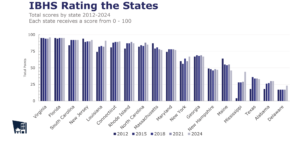The insurance and reinsurance industries are in business to take bets on risks that can be identified, assessed, prioritized and planned for financially. Disasters like hurricanes, earthquakes, massive asbestos-like litigation and even terrorist attacks fit the bill. But what about so-called Black Swan events?
Executive Summary
Insurers and reinsurers are thinking outside of the box to try to imagine seemingly unimaginable Black Swan-like events, along with cascading and coupler effects that could magnify losses should the events come to pass. That doesn't mean they're sitting in dark rooms and conjuring up big thoughts; instead, they're forming cross-functional teams internally and collaborating with outside risk experts to share information on possible disaster scenarios.A Black Swan is a disaster or series of cascading disasters that no one saw coming—hence there was no way to identify, assess, prioritize and plan for the impact. The term apocryphally derives from the settlement of Australia by the British, who had seen white swans before but never a black one.
In the centuries since, the Black Swan theory, as developed by Nassim Nicholas Taleb in 2001, has become a metaphor for a large, surprising event that causes a catastrophic financial impact that is beyond the realm of expectation—sighting a black swan when one has only seen white ones in the past.
































